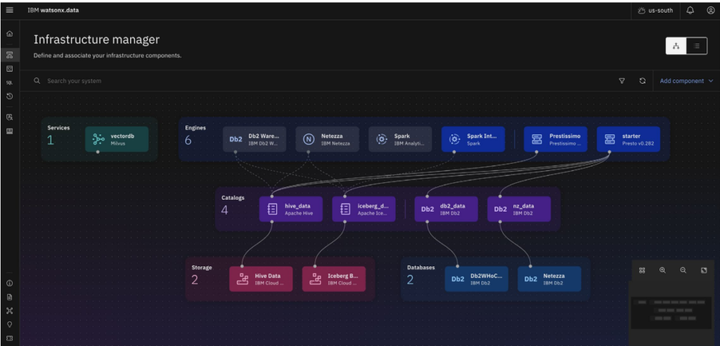How Generative AI Helps Ferrari Drive Fan Engagement and Boost Revenue

Setting the Pace for Next-Generation Fan Engagement
In the dynamic world of motorsport, global fanbases can exceed half a billion people, generating immense passion and commercial potential. However, the challenge for many teams—and the executives who lead them—has been turning this passion into sustainable revenue.
For Scuderia Ferrari HP, one of Formula 1’s most celebrated and storied brands, that journey has entered a new era. By embracing Generative AI (gen AI) and forging a strategic alliance with IBM, Ferrari is reshaping how modern enterprises engage massive audiences and monetize their enthusiasm.
This case study delves into how gen AI elevates Ferrari’s engagement strategy from a simple broadcast model to a sophisticated, data-driven ecosystem. We will explore the core challenges leaders face in fan monetization, reveal strategic insights, illustrate IBM’s transformational role, and detail how generative AI unlocks novel revenue streams and personalization at scale.
Whether you’re an enterprise executive seeking to refine your approach to digital engagement or a technology leader aiming to harness AI’s capabilities, these insights can serve as your roadmap. Let’s see how Ferrari combines tradition, technology, and tenacity to stay ahead in the race for fan revenue.
1. Key Challenges in Fan Monetization
Fragmented Engagement Channels
Ferrari’s fan community spans nearly every time zone, language, and platform. With over 500 million Formula 1 fans worldwide [1], keeping them engaged in a unified, high-quality manner proved overwhelming. Before leveraging gen AI, Ferrari struggled with a patchwork of content strategies across social media, email newsletters, live broadcasts, and mobile platforms—none of which were seamlessly integrated or capable of delivering truly personalized experiences.
Why It Matters for Enterprises
Fragmentation leads to missed revenue. If you cannot capture and analyze data from every touchpoint, you lose the ability to personalize offers, respond to real-time opportunities, or tailor merchandise strategies. Potential fans or customers drop off due to inconsistent engagement or irrelevant messaging. For a high-brand-equity enterprise like Ferrari, each missed connection equates to lost long-term monetization.
Limited Real-Time Personalization
Historically, personalization strategies in sports marketing have centered on static demographic data (e.g., location, age range). Yet modern fans demand dynamic, real-time relevance—particularly when it comes to live events like race weekends. Ferrari realized that if it couldn’t deliver insights as the action unfolded, fans would drift to third-party channels or competitor broadcasts.
Monetizing an ever-evolving, emotion-driven environment requires advanced analytics and content generation that legacy systems simply can’t match.
Why It Matters for Enterprises
Brands that rely on manual or delayed content production cannot accommodate real-time changes in consumer preference, sentiment, or context. This limitation hampers the ability to capitalize on ‘micro-moments’—precise instants when fans are most emotionally engaged and willing to spend on merchandise, digital offerings, or premium experiences.
Incomplete Monetization Pathways
A robust revenue engine extends beyond ticket sales and basic merchandise. While Ferrari had loyal supporters ready to invest in all things “Prancing Horse,” the path from digital engagement to payment was often unclear or too generic to entice purchase.
For instance, offering a single line of merchandise to an entire global audience ignores the nuances of local interests, cultural preferences, or fan segments based on purchase history. Similarly, the absence of tiered premium content—like exclusive driver insights, AI-driven race predictions, or virtual reality experiences—meant Ferrari was not fully leveraging the willingness of many fans to pay for deeper engagement.
Why It Matters for Enterprises
Without a range of tiered offerings, brands miss out on revenue from fans at varying levels of willingness to pay. It’s not just about selling more merchandise; it’s about creating an ecosystem of premium content, experiences, and data-driven upsell opportunities that cater to both casual and ardent supporters.
2. Strategic Insights: Leveraging AI for Personalization and Revenue
Emotional AI and Hyper-Personalization
Emotional AI—algorithms trained to interpret sentiment and emotional cues—has become a cornerstone of Ferrari’s fan engagement approach [2]. By processing social media sentiment, in-app feedback, and even live poll data, IBM’s AI tailors both content and offers in real-time. For example, if emotional AI detects heightened excitement for a particular driver or rivalry, fans may receive exclusive behind-the-scenes footage or limited-edition merchandise tied to that story arc.
Impact on Monetization:
Hyper-personalization increases the likelihood of purchases by aligning offers with each fan’s emotional state. According to insights from Ferrari’s partnership with IBM, personalized offers and content can significantly increase average order value and reduce churn across digital channels [3].
Turning 10,000 Data Points per Second into Dollars
Formula 1 cars produce up to 10,000 data points per second—ranging from engine performance to tire temperatures [4]. IBM’s AI frameworks help Ferrari convert this torrent of telematics into real-time, fan-facing insights via apps, social media updates, and augmented reality experiences. This not only enriches the viewing experience but also provides data-driven sponsorship opportunities.
Impact on Monetization:
By sharing real-time metrics on driver performance, tire degradation, and pit strategy, Ferrari can sell branded data overlays to sponsors or bundle exclusive data sets as premium content. Brands looking for deeper engagement can sponsor these insights, paying a premium to appear alongside cutting-edge race stats.
Monetizing the Second Screen
Ferrari’s reimagined mobile app, set to launch in the 2025 season, acts as a second-screen companion that integrates live race telemetry, video feeds, and interactive features like polls, quizzes, and AR/VR elements [5]. This second-screen approach is crucial: fans increasingly watch live sports with a smartphone in hand, seeking complementary data or social engagement.
Impact on Monetization:
The app includes multi-tier subscription models—free, plus, and premium—where paying users get enhanced race analytics, behind-the-scenes feeds, and personalization features powered by IBM’s AI. Similarly, targeted advertising slots within the app allow sponsors to reach segmented audiences, boosting ad revenue and providing new marketing channels for Ferrari.
3. IBM’s Transformational Role: Technology, Business, and Leadership
To address complex challenges—from real-time personalization to operational efficiency—Ferrari turned to IBM. This partnership goes beyond technology; it redefines business processes, culture, and leadership approaches toward data-driven monetization.
Technology Integration: Hybrid Cloud and AI Platforms
IBM provides the backbone for Ferrari’s digital infrastructure, leveraging hybrid cloud solutions like Red Hat OpenShift to handle large-scale data processing [6]. AI modules ingest telematics from the cars, fan interaction data from digital platforms, and even sentiment data from social media. This holistic view, processed in milliseconds, powers personalized content suggestions, AR/VR experiences, and e-commerce recommendations.
Outcomes:
- Scalability: Ferrari can handle spikes of millions of concurrent users on race days without sacrificing performance.
- Reliability: Real-time AI-based analytics ensure zero downtime for fan-facing digital platforms, particularly critical during peak engagement.
Business Process Redesign: Data-Driven Culture
Under IBM’s guidance, Ferrari reoriented its workflows around data insights. Previously siloed departments—marketing, merchandise, sponsor relations—now collaborate through shared dashboards and analytics. For instance, if data indicates surging interest in a particular driver among a Spanish-speaking audience, the merchandise team can quickly promote relevant items, and marketing can localize campaigns with AI-assisted translations [7].
Outcomes:
- Faster Decision-Making: Instead of waiting for post-race analytics, leadership can make swift adjustments mid-race or mid-campaign.
- Cross-Functional Efficiency: A single, integrated data pipeline reduces duplicate efforts and fosters unity in brand messaging.
Customer Understanding: Emotional AI and Behavioral Analytics
IBM’s Emotional AI capabilities empower Ferrari to dive deeper into fan psychology—gauging not just “likes,” but emotional intensity. By parsing textual feedback, emojis, and engagement time, Ferrari refines its content strategy to keep fans hooked [8]. This includes identifying micro-influencers, communities of passionate “superfans,” and budding audience segments in emerging markets.
Outcomes:
- Targeted Monetization: AI highlights which fans prefer premium trackside experiences vs. those who favor digital exclusives or big-data insights on race strategy.
- Enhanced Sponsorship Value: Ferrari can showcase these audience insights to potential partners, enabling more precise sponsorship deals and higher returns on marketing investments.
Leadership Emphasis on Innovation
A partnership of this magnitude requires cultural buy-in at the executive level. Ferrari’s leadership has positioned the IBM collaboration as central to the brand’s future growth. This strategic vision ensures that AI adoption permeates daily operations—extending beyond marketing to engineering, supply chain, and sustainability initiatives [9].
Outcomes:
- Unified Vision: Top-down endorsement ensures all stakeholders, from pit crews to marketing teams, adopt AI best practices.
- Sustainable Competitive Edge: With a continuous focus on AI-driven innovation, Ferrari remains agile in a rapidly shifting tech landscape.
4. AI-Driven Monetization Models: From Subscriptions to Sponsorships
One of the most significant benefits of IBM’s generative AI is the sheer variety of monetization avenues it opens. Below are the core models Ferrari has pursued.
Subscription Tiers and Pay-Per-View
Ferrari introduced multi-level subscription models for its reimagined mobile platform, scheduled for the 2025 launch [5]. The free tier offers basic race updates, while the plus tier includes advanced race analytics, personalized insights, and limited behind-the-scenes footage. The premium tier elevates the experience further with AI-driven race predictions, interactive driver Q&A sessions, and AR replays of pivotal race moments [10].
- Revenue Impact: Subscriptions unlock recurring revenue streams rather than one-off sales. Fans who engage deeply often stay subscribed year-round for exclusive content, bolstering predictability in cash flow.
- AI Advantage: Fans see only the most relevant upsells or recommended subscription level based on usage patterns, language, and interests.
Dynamic Ticketing and Event Packages
IBM’s AI algorithms can adjust ticket pricing and package offers in real-time, reflecting variables like seat popularity, local demand, or upcoming weather forecasts. This approach, often known as dynamic pricing, ensures optimal revenue from high-demand events while maintaining accessibility for broader audiences [11].
- Revenue Impact: Ferrari can see a significant lift in ticket revenue—sometimes by double-digit percentages—when seat categories are dynamically priced.
- AI Advantage: Real-time data automatically calibrates prices and promotions, eliminating guesswork and boosting occupancy rates at brand events or fan days.
Sponsorship Activation and Data Licensing
Sponsorships, historically reliant on track signage and brand mentions, now benefit from in-depth analytics. By analyzing fan engagement across multiple digital platforms, Ferrari can demonstrate precisely how sponsor messages convert into clicks, purchases, or social mentions [12]. Moreover, Ferrari can license aggregated, anonymized data sets—pertaining to consumer behavior or race analytics—to third parties for a fee.
- Revenue Impact: Detailed performance metrics justify higher sponsorship rates and open data licensing deals.
- AI Advantage: Sponsors can micro-target subgroups—for example, fans who consistently engage with environmental sustainability content—maximizing brand relevance and ROI.
Branded VR and Immersive Experiences
Virtual Reality (VR) and Augmented Reality (AR) have emerged as powerful fan engagement tools. Ferrari uses AI-driven VR experiences that place fans in virtual pit stops or behind the driver’s seat. Premium access to these experiences can be sold as part of event packages or digital subscriptions, commanding higher margins [13].
- Revenue Impact: AR/VR can drive significant incremental revenue, especially among younger fans or tech-savvy segments seeking cutting-edge engagement.
- AI Advantage: Gen AI personalizes these experiences by integrating real-time telemetry, historical data, and user-specific elements—such as favorite drivers or iconic race moments.
Personalized Merchandising and E-Commerce
IBM’s gen AI analyzes fan preferences, regional trends, and historical purchasing patterns. For example, it might detect that fans in Southeast Asia gravitate toward apparel commemorating Ferrari’s past champions, while Western European fans might prefer current-driver gear with advanced fabric tech [14]. The platform then automatically recommends relevant products, fosters scarcity-based campaigns, and integrates dynamic price discounts to incentivize conversions.
- Revenue Impact: Personalized recommendations often boost average order value (AOV) and reduce cart abandonment rates significantly.
- AI Advantage: Automated analytics remove guesswork from product strategy, enabling real-time adjustments to promotional campaigns.
5. Actionable Recommendations for Enterprise Leaders
To replicate Ferrari’s success with gen AI in your organization, consider these strategic steps:
- Consolidate Data Streams
- Integrate fan or customer data from all digital channels into a single platform. Hybrid cloud infrastructures, similar to those provided by IBM, allow scalable data processing while preserving flexibility.
- Adopt Emotional AI
- Move beyond basic user analytics. Invest in sentiment and emotional analysis to understand the “why” behind consumer behavior. This data can guide content creation, product development, and real-time offers.
- Focus on Immersive Digital Experiences
- Explore AR and VR to offer fans or customers unique, interactive content. These experiences can be monetized through tiered access models or premium sponsorships.
- Implement Real-Time Personalization
- Leverage machine learning for instant content generation, product recommendations, and dynamic pricing. Even small real-time adjustments can dramatically increase conversion rates.
- Monetize Data via Licensing
- If your data has potential value to third parties—sponsors, research firms, or other organizations—create structured offerings for data licensing. Ensure compliance with privacy regulations through anonymization and aggregated insights.
- Sustainability as a Differentiator
- With 74% of IBM’s data center energy consumption coming from renewable sources [15], Ferrari’s partnership highlights how environmental responsibility can be a marketing advantage. Adopt green data-processing methods to appeal to eco-conscious fans or stakeholders.
- Cultivate an AI-First Culture
- Executive sponsorship is critical. Align departmental KPIs—be it marketing, operations, or customer service—around AI-driven metrics. Provide ongoing training so teams remain current with evolving technologies.
By following these steps, enterprise leaders can unlock new revenue streams and cement their brand’s position as a digital innovator in an increasingly AI-driven marketplace.
Lessons for the Modern Enterprise
Ferrari’s journey underscores a pivotal truth: in the age of hyperconnectivity, raw enthusiasm alone won’t guarantee success. True monetization hinges on harnessing data, understanding emotional triggers, and delivering an experience so compelling that fans transition from passive watchers to active, paying participants. With IBM’s generative AI capabilities, Ferrari has bridged the gap between global passion and revenue growth, setting a new standard for how sports and entertainment entities can scale in the digital era.
For executives and technology leaders alike, the key takeaway is that generative AI isn’t just an auxiliary tool; it’s a catalyst that can unify data, personalize user engagement, and transform operational processes. Whether it’s dynamic pricing, immersive VR experiences, or AI-driven sponsorship analytics, each layer of innovation is powered by an unwavering commitment to real-time intelligence. In Ferrari’s case, this commitment has revitalized brand loyalty, broadened sponsorship potential, and opened new revenue channels across a variety of touchpoints. Ultimately, those who embrace AI-led strategies stand to gain a decisive edge—not just on the racetrack, but in any marketplace defined by speed, scale, and customer obsession.
Stay in the Lead
If you’re ready to revamp your digital engagement and drive new revenue streams, subscribe to our newsletter for expert insights on integrating generative AI into enterprise strategies. Stay ahead of the competition, harness real-time data, and discover how AI can power your brand toward a winning formula—on and off the track.
References
[1] https://www.forbes.com/sites/bernardmarr/2023/07/10/how-artificial-intelligence-data-and-analytics-are-transforming-formula-one-in-2023/
[2] https://techcrunch.com/
[3] https://analyticsindiamag.com/ai-news-updates/ferraris-fan-struggles-lead-to-ibm-partnership/
[4] https://www.ibm.com/sports/ferrari
[5] https://technologymagazine.com/articles/how-ferrari-ibm-will-drive-f1-fan-engagement
[6] https://www.racescene.com/racing-news/scuderia-ferrari-and-ibm-forge-multi-year-strategic-partnership-to-drive-innovation
[7] https://www.businesstoday.in/latest/world/story/ibm-and-ferrari-team-up-to-supercharge-fan-engagement-in-formula-1-with-next-gen-data-and-analytics-453066-2024-11-08
[8] https://techcrunch.com/
[9] https://analyticsindiamag.com/ai-news-updates/ferraris-fan-struggles-lead-to-ibm-partnership/
[10] https://www.timesofai.com/news/ibm-ferrari-partner-fan-engagement-formula-1/
[11] https://analyticsindiamag.com/ai-news-updates/ferraris-fan-struggles-lead-to-ibm-partnership/
[12] https://markets.businessinsider.com/news/stocks/ibm-selected-as-fan-engagement-data-analytics-partner-for-scuderia-ferrari-1033973211?op=1
[13] https://www.timesofai.com/news/ibm-ferrari-partner-fan-engagement-formula-1/
[14] https://www.motorsportweek.com/2024/11/08/ferrari-signs-multi-year-f1-partnership-with-ibm/
[15] https://community.ibm.com/community/user/ibmz-and-linuxone/blogs/philip-dsouza/2025/01/24/six-ways-ibm-is-making-artificial-intelligence-mor


